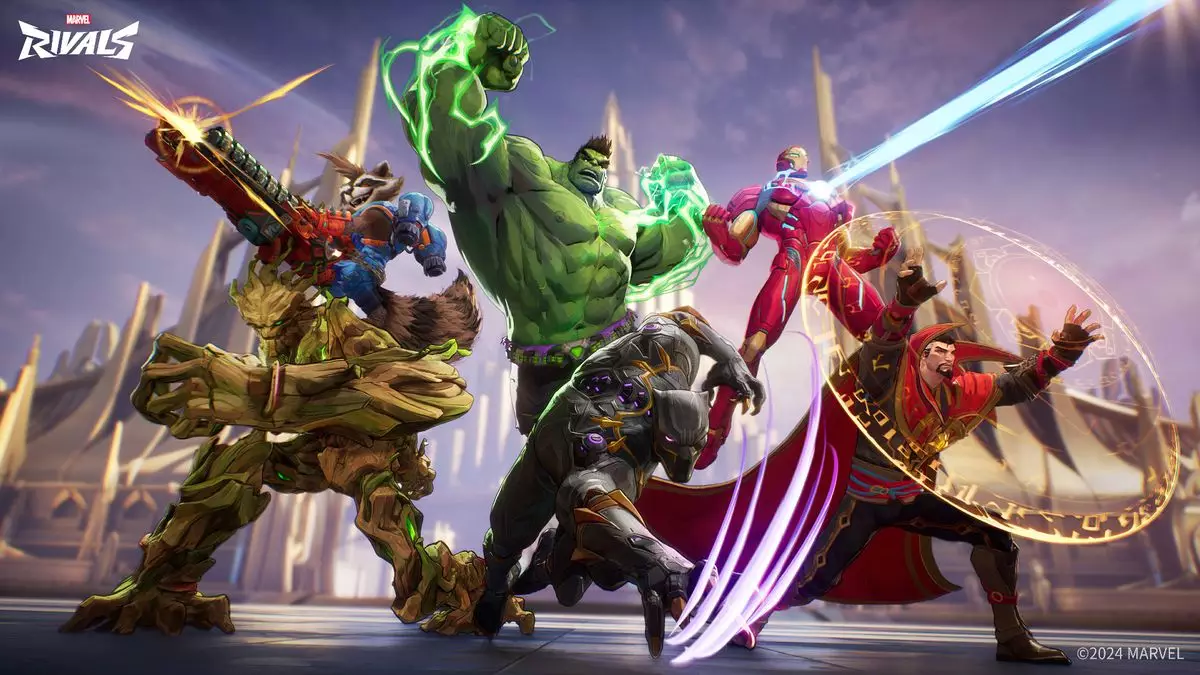The vibrant world of gaming, particularly in competitive environments, often gives rise to a multitude of theories and opinions regarding character effectiveness. Among these discussions, the Marvel Rivals meta has sparked confusion and debate, especially concerning the performance of various characters. Recently, a statistical deep dive by a Reddit user, known as Aggragating_Job9976, has aimed to clarify this chaotic landscape, showcasing the power of data in understanding character viability in gameplay.
Aggragating_Job9976 took an in-depth look at the characters available in Marvel Rivals, scrutinizing the performance of top-tier players on the game’s leaderboard. Their method stands out not just for its scope but also for its careful consideration of various metrics. Instead of analyzing only the main characters utilized by these players, the analysis incorporated broader playtime stats spanning numerous heroes. This expansive approach involved collecting nearly 600 rows of gameplay data, ensuring a comprehensive overview of character performance, while being mindful of privacy settings that limited access to some player statistics.
This detailed examination highlights a critical aspect of gaming analytics. It goes beyond surface-level interpretations of a hero’s efficacy, diving into the nuanced data of pick rates and average wins. By doing so, Aggragating_Job9976 manages to produce a tier list that reflects a more factual representation of hero performance in the competitive scene, contrasting with the intuitive assessments that many players might commonly adopt.
One of the most enlightening outcomes of this study is the challenge it presents to established beliefs regarding character strength. For instance, heroes like Hulk and Iron Fist, widely perceived as dominant, surprisingly fail to secure a spot in the coveted S tier. In stark contrast, characters such as Doctor Strange and Luna Snow rise to the top, indicating that success in this meta is more than just raw power. The analysis reveals that a character’s win rate must be contextualized within the frequency of their selection in matches, underscoring an essential truth in competitive gaming: popularity does not always equate to effectiveness.
Moreover, the author’s insights on win rates shed further light on these dynamics. They articulate the importance of looking at win rates through different lenses—Doctor Strange’s impressive win rate, gathered from a robust dataset of 2,900 games, suggests a level of consistency and reliability that is paramount for players seeking to improve their performance. This contrasts with the more inflated win rate of Peni Parker, which is based on a significantly smaller sample size of 400 games. It signals a cautionary note: individual success does not guarantee that a character can be universally effective.
The resulting tier list not only provides a statistical foundation but also serves as a conversation starter within the gaming community. Players who main characters like The Punisher or Rocket Raccoon might derive newfound validation from their current choices being ranked in A-tier, while others might be prompted to reconsider their strategies. The commentary around players’ ranks exposes a crucial element of the gaming psyche—the need to be continually adaptive and to find characters that align not only with personal style but also with demonstrable effectiveness in competitive contexts.
Furthermore, the surprising placement of Scarlet Witch in D tier propels gamers to rethink their established views on character potential. Such rankings demonstrate that the conversation around character strength is not static but fluid, affected by ongoing gameplay trends and statistical insights.
Aggragating_Job9976’s statistical analysis of the Marvel Rivals meta transcends mere numbers; it offers a structured viewpoint that encourages players to rethink their strategies and character selections grounded in actual performance data. This study highlights the importance of understanding not just individual gameplay experiences but also the larger trends that can inform smarter, more data-driven decisions. As the competitive landscape of gaming continues to evolve, such analytical approaches will undoubtedly play a pivotal role in shaping how players engage with their favorite characters—turning chaos into clarity in the thrilling world of Marvel Rivals.


Leave a Reply